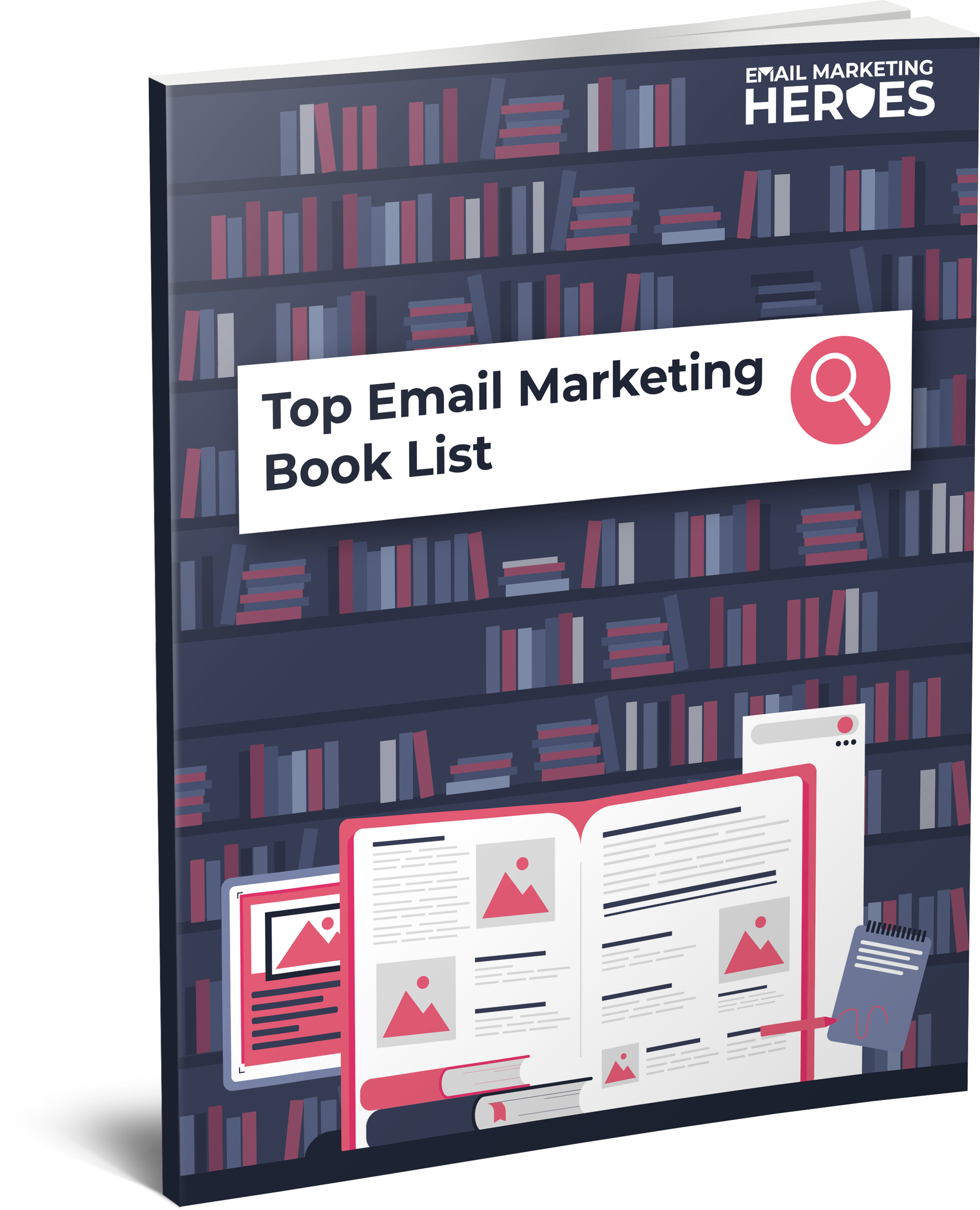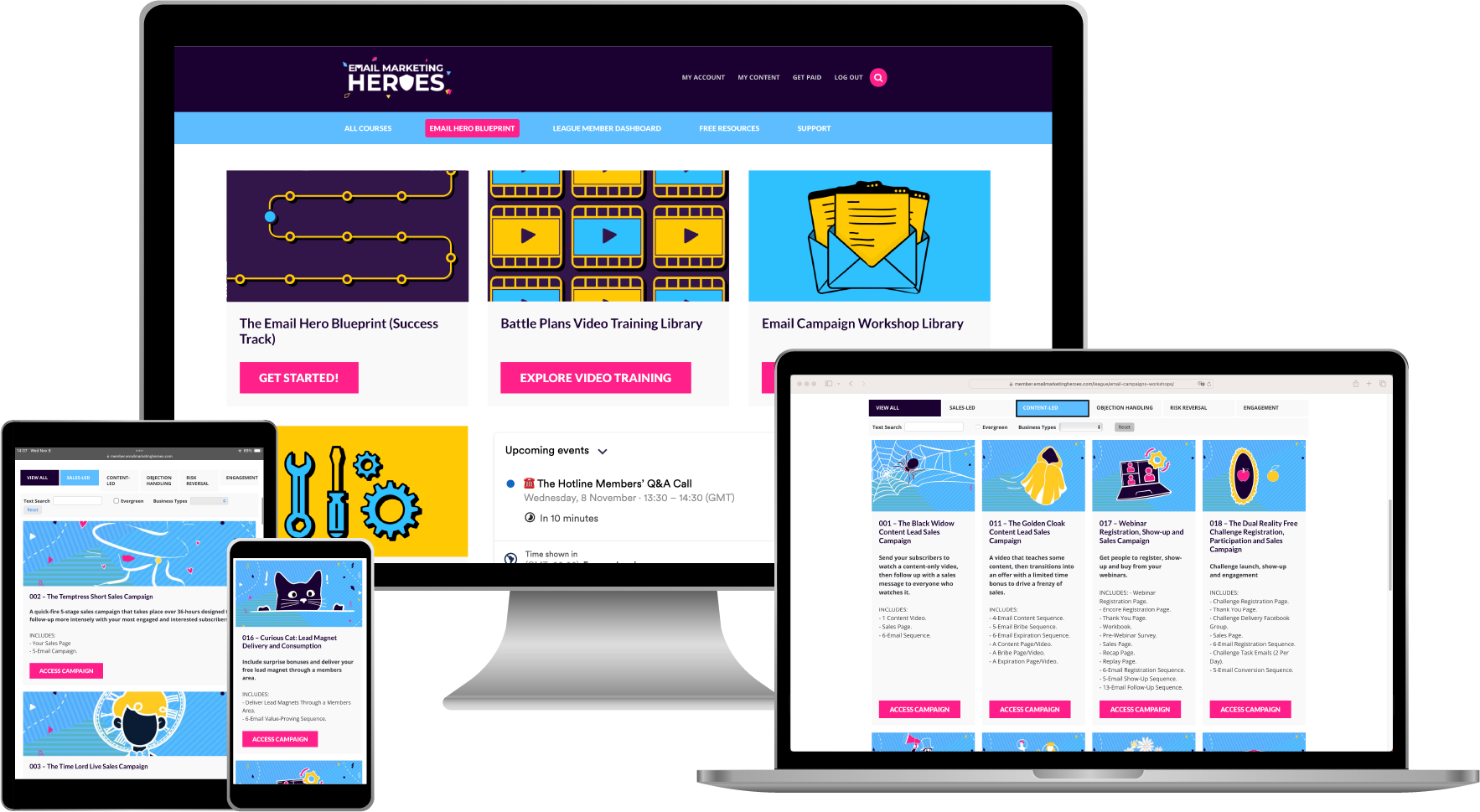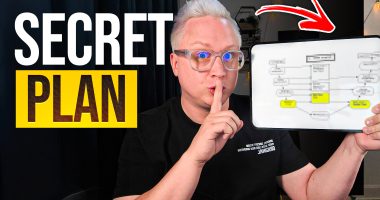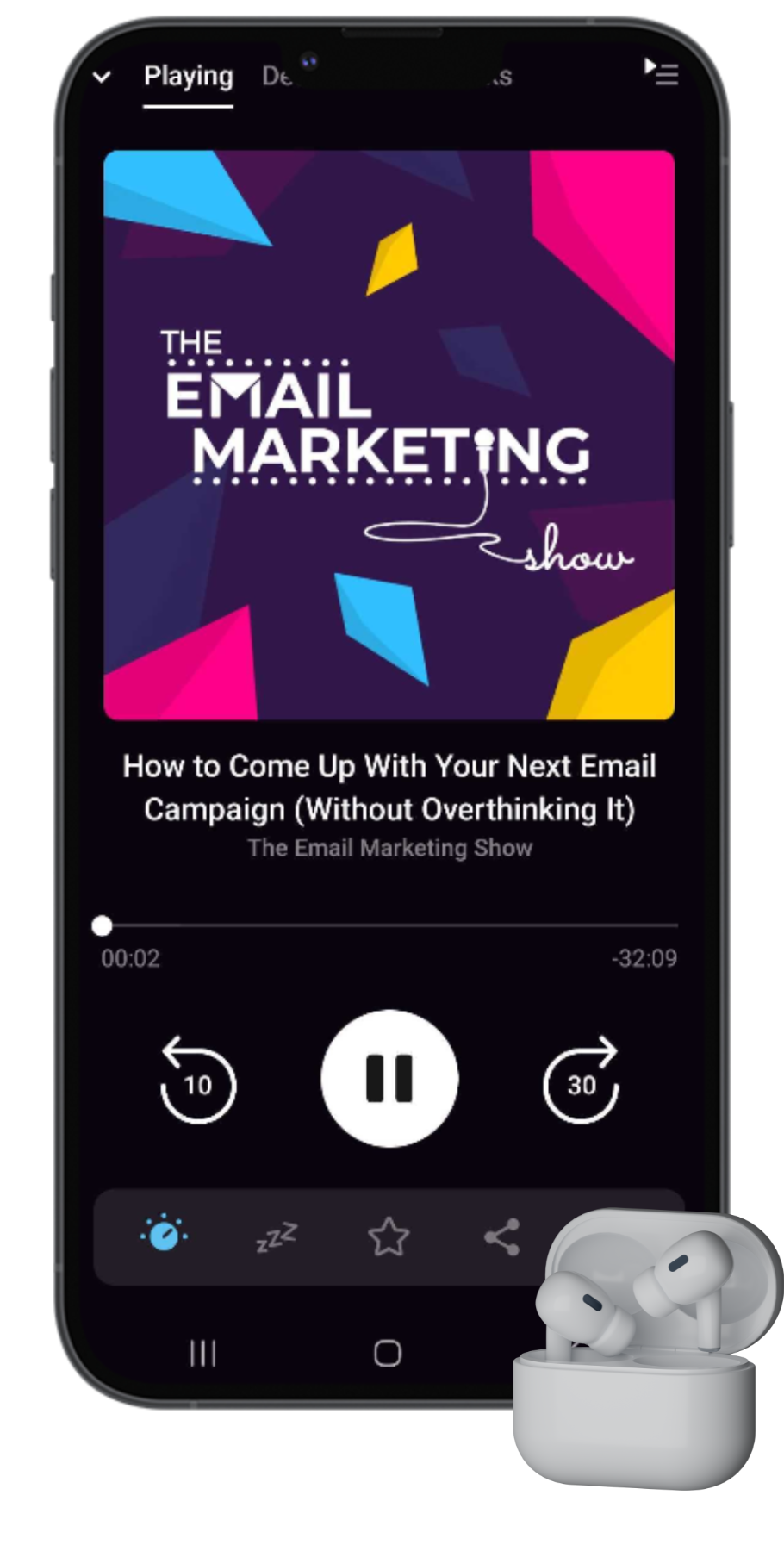
Advanced Psychology: Using Compound Curiosity
Want to know how to create clever subject lines for emails that will get you more clicks and sales? Then you need to find out about this advanced psychological strategy called compound curiosity. That's right – it's not just curiosity the way you may have been taught before.
This will quite literally blow your mind! Ready to learn how to do it?
SOME EPISODE HIGHLIGHTS: (0:10) Want to make your sales from your email marketing? Grab our Click Tricks. (3:31) Introducing our new sponsor - Selzy. (5:01) How does curiosity work? (5:28) Where to use curiosity in your email marketing. (6:18) What is the difference between curiosity and compound curiosity? (7:27) Examples of curiosity and compound curiosity. (8:38) How to create your own subject lines using compound curiosity. (10:55) Other ways to implement compound curiosity. (12:43) Introducing our course Subject Lines that Drive Sales. (13:30) Subject line of the week.
Want to get more sales from your email marketing?
We put a little something together for you. It's really cool and it's FREE (yes, it's cool and free – we're nice like that). If you want to make more sales from your email marketing, you need more clicks on the things that you're selling!
That's why we're giving you 12 creative ways to help you get more clicks in every email you send. It's a FREE download, and it's called Click Tricks. You can grab it here.
Introducing our new sponsor – Selzy
For every dollar you spend on email marketing, you’re supposed to make at least a $36 return. But that's hard to do if you're scratching your head wondering how to use all of these advanced email marketing features. This is why we're introducing Selzy, a tool where you don’t have to squint your eyes and give yourself a migraine to get started.
You’ll be able to launch your first campaign in just 15 minutes, create emails and automations super easily, and if you need to, you can call for backup 24/7 from Selzy’s amazing support team. Selzy is sponsoring this episode of The Email Marketing Show, so if you want to give it a shot, for just $49 you can have a lifetime account with unlimited emails, automation, segmentation, and some advanced analytics. And that’s all of that for the price of around 10 lattes! You can grab this bonkers deal here.
How does curiosity work?
Curiosity is one of the most important elements you can use to get people to open your emails and click on the links inside them. Without curiosity, no one's going to open your emails, and that's simply because they're not curious enough to find out more! Curiosity is the emotion we use to get clicks and opens, and it's pretty much the only one that’s going to do that for you! So you want to lean into this psychological strategy to learn how to write clever subject lines for emails that get opened more and get you more clicks!
Where to use curiosity in your email marketing
So where will you use curiosity? You can use curiosity in two places – your subject lines and the content of your email (the body copy).
Curiosity in your subject lines drives people to open your emails and then click on your links. Because one of the things you want to do is to make sure you prompt people to take the next action with you but also inspire any potential actions after that. In other words, with your subject lines, you want to drive people to open and also be pre-framed to click to find out what's going on.
The body copy of your emails needs to drive people to click on the links – that's the direct action you want people to take. But you also want them to be inspired to go forward and check out your products and buy.
This is why we use curiosity in 80-90% of our subject lines, and out of those, probably half will use this psychological strategy we call compound curiosity. So let's see what the difference between the two is.
What is the difference between curiosity and compound curiosity?
The way most people deal with curiosity is by saying things like, “I’ve got a video for you to do X”. This is you listing all the benefits in the subject line.
But compound curiosity looks more like, “In this video, you'll learn [benefit] and wait until you see what Kennedy is wearing at 2 minutes and 22 seconds!” We call it compound because you have one piece of curiosity added on top of another one.
Why does this work? Because as a reader you know you're going to benefit from these emails. And benefits are important in the body copy because they explain what the thing you're selling or offering is doing for people. But then you also want to multiply and compound that curiosity (or that benefit) with some additional curiosity.
Now, that doesn't mean you use this for everything – you definitely don't want to overuse this. But let's have a look at some examples of curiosity and compound curiosity in action.
Examples of curiosity and compound curiosity
Here are a couple of examples that trigger curiosity:
- “You’re doing it wrong.” People see this and wonder what they’re doing wrong.
- “It’s the summer of 2002.” And here people wonder what happened in the summer of 2002.
This is what we refer to as normal curiosity, and you’ll probably already be familiar with that.
But here are some examples that use compound curiosity:
- “Arguing with a guru.” This is a real subject line we sent out and it’s compound curiosity because here the audience is wondering WHO the guru is and WHAT we were arguing about. Did we win? Or did they win?
- “Lessons from the milkman.” This is another real subject line we sent out. It's compound curiosity because someone may be wondering WHAT the lessons were and what we learnt from the milkman. Also, will they help the reader? What can one possibly learn from the milkman?

The Top 10 Books To 'Power Up' Your Email Marketing
10 book recommendations that will improve all areas of your email marketing (including some underground treasures that we stumbled upon which have been game-changing for us).
How to create your own subject lines using compound curiosity
So let's look at how you can also create clever subject lines for emails that use compound curiosity in a way that's subtle but powerful. The four examples we shared above might not sound all that different on the surface, but they are. And the subject lines that use compound curiosity have two elements of curiosity added in. That's key – you want two elements of curiosity in the subject line or the email copy you're writing.
Think of this as questions that the reader might ask. Usually, these are going to be a WHO and a WHAT or a WHAT and a HOW. In other words, you’re looking to write subject lines that trigger two questions that start with two of these questioning words.
So for example, with WHAT, one of the questions might be, “What happened?” With HOW the question might be, “How did that come about?” Or, “How did we get those lessons from the milkman?” And, “How are they relevant to your reader?” Or with WHO, the question could be, “Who is the guru?”
When you trigger two questions in one subject line you subconsciously get under the skin of your subscribers. They want to know more and more desperately than they would if this was just a single-curiosity subject line.
So the key to making compound curiosity work is to have two different questioning words. If you had a subject line that said, “It was the milkman and the cowboy” that doesn’t work as well because you have two WHO questions. Who’s the milkman and who’s the cowboy? It doesn’t add anything.
But when you have two different questions, that’s when you have compound curiosity because they multiply each other rather than just adding to each other. You want multiple questions going off on people’s minds because that means people are giving your subject line more attention. It means they'll open the email to find out what's going on and make sense of it.
Other ways to implement compound curiosity
You can also do this by reframing words. Here's an example of that from a subject line we sent out during the lockdown period that read, “What's in THIS box?” Using capital letters for the word THIS was an interesting choice. People want to know what’s in the box, but they're also curious to find out if there’s a picture of the box in the email. Are you going to tell me about the box? How do I know what the box is? There's double curiosity there.
And as you get better and more practiced with creating subject lines that use compound curiosity, you can do what we do, which is to pull the story we're going to talk about in the email into the subject line. How? You write the email first, then go back to it and work out how much detail you can remove from the story to strip it down to 3-6 words and turn it into a subject line. And, of course, you want to phrase it in such a way that it triggers more than questions in people’s minds.
This might sound complicated, but it comes with practice. The more you do it, the faster you'll get, and it’ll become very natural. So just go through the story in your email and think of different opportunities to inject a few questions into somebody’s mind with it.
If you do this, you’ll end up with more people opening your emails and clicking the links. Remember that people are curious about different things, so give compound curiosity a try. It's an advanced psychological technique that will help you create clever subject lines for your emails that get them opened and make you sales.
Introducing our course, Subject Lines that Drive Sales
If you want to check out our approach to creating psychologically impactful and clever subject lines for emails that drive clicks and sales using strategies like compound curiosity, we have something for you that doesn't rely on dusty old formulas.
In fact, you'll notice we never give you formulas for your subject lines! We simply tell you what subject lines we use and then break down the psychology behind them to tell you why they work. We have a full course on this called Subject Lines that Drive Sales. It's available for free for all members of The League. So if you're not a member already, go and check it out!
Subject line of the week
This week’s subject line uses compound curiosity and proves how short (yet effective) subject lines can be. It’s just three words, and it’s “My dirty tactics.” People want to know WHAT the tactics are and WHY they are dirty. So it has in-built compound curiosity. Clever, right? Try it out!
Useful Episode Resources
Related episodes
How To Use Email Subject Lines To Do More Than Get Your Emails Opened.
Writing Subject Lines Without Using Formulas.
How To Write Email Subject Lines For Sales Emails (That Actually Work).
FREE list of the top 10 books to improve your email marketing
If you want to write better emails, come up with better content, and move your readers to click and buy, here's how. We put together this list of our Top 10 most highly recommended books that will improve all areas of your email marketing (including some underground treasures that we happened upon, which have been game-changing for us). Grab your FREE list here.
Join our FREE Facebook group
If you want to chat about how you can maximise the value of your email list and make more money from every subscriber, we can help! We know your business is different, so come and hang out in our FREE Facebook group, the Email Marketing Show Community for Course Creators and Coaches. We share a lot of training and resources, and you can talk about what you're up to.
Try ResponseSuite for $1
This week's episode is sponsored by ResponseSuite.com, the survey quiz and application form tool that we created specifically for small businesses like you to integrate with your marketing systems to segment your subscribers and make more sales. Try it out for 14 days for just $1.
Join The League Membership
Not sick of us yet? Every day we hang out in our amazing community of Email Marketing Heroes. We share all of our training and campaigns and a whole bunch of other stuff. If you're looking to learn how to use psychology-driven marketing to level up your email campaigns, come and check out The League Membership. It's the number one place to hang out and grow your email marketing. Best news yet? You can apply everything we talk about in this show.
Subscribe and review The Email Marketing Show podcast
Thanks so much for tuning into the podcast! If you enjoyed this episode (all about how to use compound curiosity to create http://www.slaterpharmacy.com clever subject lines for emails that will get you clicks and sales) and love the show, we'd really appreciate you subscribing and leaving us a review of the show on your favourite podcast player.
Not only does it let us know you're out there listening, but your feedback helps us to keep creating the most useful episodes so more awesome people like you can discover the podcast.
And please do tell us! If you don't spend time on email marketing, what do you really fill your working days with? We'd love to know!






